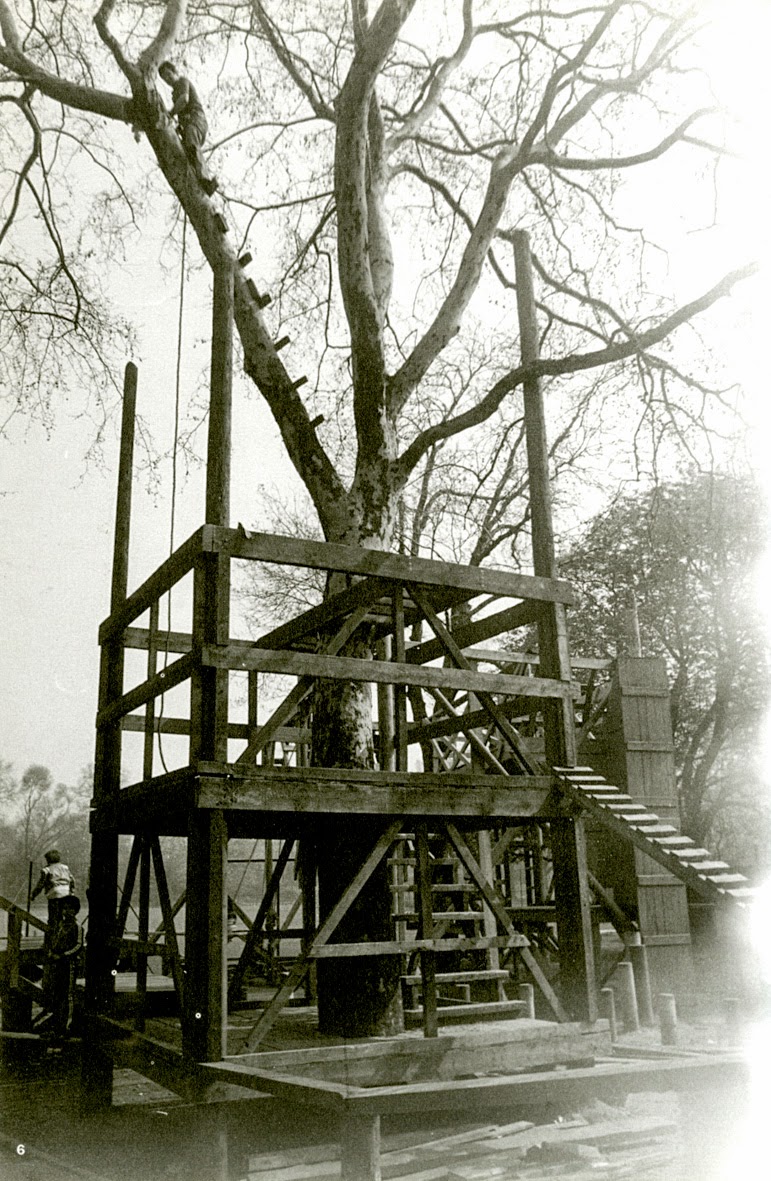Monday, 28 April 2014
Adventure Time
An architecture of play:
a survey of London's adventure playgrounds
Nils Norman
Four Corners Books, London 2003
A survey of London's adventure playgrounds with several short essays explaining their genesis from WWII bomb sites and development history.
Paul Claydon's essay The Vernacular of Play raises Jan Huizinga and Roger Caillois concept of 'fixed play' as opposed to 'free play', as the playground vernacular architecture and furniture influences the political and imaginative spaces of play. So, as in the photograph below, 'fixed' playground objects inevitably place limits on the possibilities of play as they are formed around a preconceived adult design. An adventure playground is usually designed (and sometimes built) by children in a deliberately open-ended manner, so that spaces are physically and mentally malleable and can be adapted as play and games dictate.
I am particularly pleased to see a small entry for Marble Hill, which was my local adventure playground growing up in 1970s south-west London, and a quite intimidating space for an unconfident kid like myself. Rumours of bloody accidents were popular, particularly the tale of a child that fell off the Witch's Hat and bit the tip of his tongue off. Urban legends are made of this.
Postscript:
While I have your attention, I must mention another current obsession: Adventure Time, a cartoon about a boy and his dog and their exploits in a fantasy land. Like The Simpsons at its best, the show operates on several narrative levels and offers laughs for adults and kids alike. If you enjoy the surreal nonsense of The Mighty Boosh or appreciate daft freeform childlike flights of imagination, it's worth checking out.
Labels:
architecture,
books,
children,
play,
playgrounds
Subscribe to:
Post Comments (Atom)











No comments:
Post a Comment